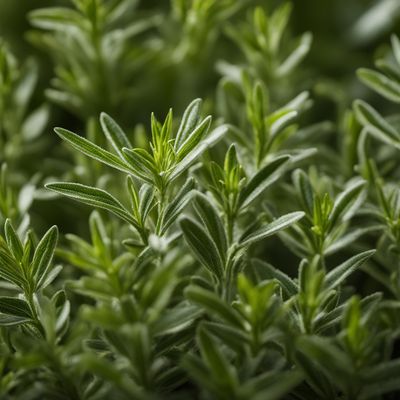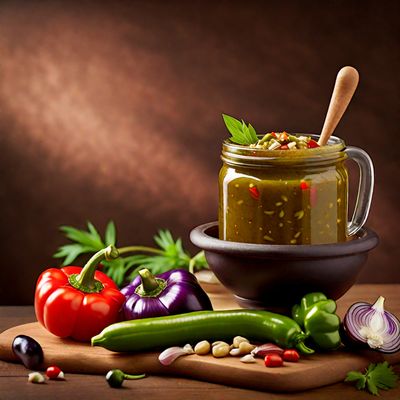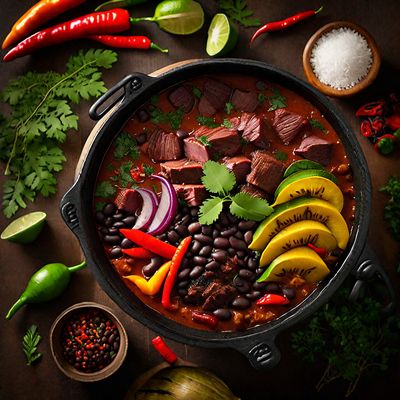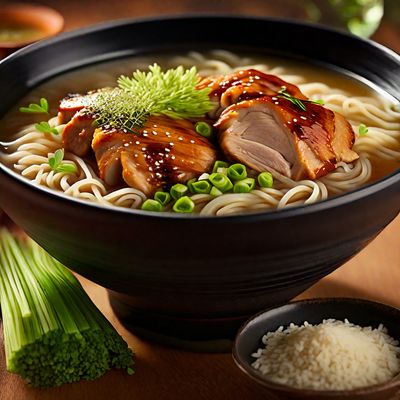
Ingredient
Bay leaves, dry
Aromatic Leaf of Flavor
Bay leaves are dried leaves from the bay laurel tree and are known for their distinctive aroma and flavor. They are commonly used in soups, stews, and various slow-cooked dishes to add depth and complexity.
Origins and history
Bay leaves have a long history and were highly regarded by ancient Greeks and Romans. They were believed to have protective properties and were used in various rituals. Today, they are cultivated in many countries and are an essential ingredient in Mediterranean and Indian cuisines.
Nutritional information
Bay leaves are not consumed in large quantities, so their nutritional value is minimal. However, they do contain vitamins A and C, as well as minerals like calcium and iron.
Allergens
There are no known allergens associated with bay leaves.
How to select
When selecting bay leaves, look for whole leaves that are intact and free from any signs of mold or damage. The leaves should have a deep green color and a strong aroma. Avoid leaves that are pale or brittle.
Storage recommendations
To preserve the flavor of bay leaves, store them in an airtight container in a cool, dark place. Avoid exposing them to heat or moisture, as this can diminish their potency.
How to produce
Bay laurel trees can be grown in containers or in the ground, but they require a Mediterranean-like climate to thrive. They prefer well-drained soil and full sun. It is best to purchase dried bay leaves from reputable sources rather than attempting to grow the tree for personal use.
Preparation tips
Bay leaves are typically used whole and are added to dishes during cooking. They are often used in stocks, soups, and braised meats to infuse a subtle herbal flavor. Remember to remove the bay leaves before serving, as they can be tough and unpleasant to eat.
Culinary uses
Bay leaves are commonly used in Mediterranean, Indian, and Caribbean cuisines. They are a key ingredient in dishes like bouillabaisse, biryani, and jerk chicken.
Availability
Bay leaves are cultivated in countries such as Turkey, Morocco, and India.
More ingredients from this category » Browse all

Tansy and related species, dry
The Golden Herb of Ancient Times

Celery leaves, dry
The Flavorful Herb: Dry Celery Leaves

Angelica, dry
The Heavenly Herb: Unveiling the Secrets of Dry Angelica

Rue, dry
The Bitter Herb: Unveiling the Secrets of Dry Rue

Wintergreen leaves, dry
Nature's Minty Delight

Thyme, dry
The Essence of Thyme: A Versatile Herb

Fennel, dry
The Fragrant Spice of the Mediterranean

Sage, dry
The Timeless Herb: Unveiling the Versatility of Dry Sage

Savory, dry
Umami Delight

Basil, dry
The Fragrant Herb: Dried Basil

Balm leaves, dry
The Soothing Herb: Balm Leaves

Mints, dry
The Versatile Herb: Unlocking the Aromatic Power of Dry Mints
Recipes using Bay leaves, dry » Browse all

Italian Beef Bourguignon
Tender Beef Stew with Italian Flair

Mediterranean Gumbo
A Fusion of Flavors: Mediterranean Gumbo Delight

Sopa de Pollo y Fideos (Mexican Chicken Noodle Soup)
Caldo de Pollo con Fideos (Hearty Mexican Chicken Soup with Noodles)

Feijoada - Latvian Style
Hearty Bean Stew with a Latvian Twist

Caribbean Feijoada
Tropical Delight Feijoada

Peruvian-Inspired Gumbo
Andean Gumbo: A Fusion of Flavors

Tagliatelle al ragù alla Bolognese
Puerto Rican-style Tagliatelle with Bolognese Sauce

French-Style Ramen
Ramen à la française

Latin American Chicken Soup
Sopa de Pollo: A Latin Twist on Chicken Soup

Vegetarian Chickpea Soup
Savory Chickpea Delight: A Hearty Vegetarian Soup

Turkish-Style Chicken Soup
Soothing Turkish Chicken Soup: A Bowl of Comfort

Vegan Coq au Vin
Plant-Based Delight: Vegan Coq au Vin